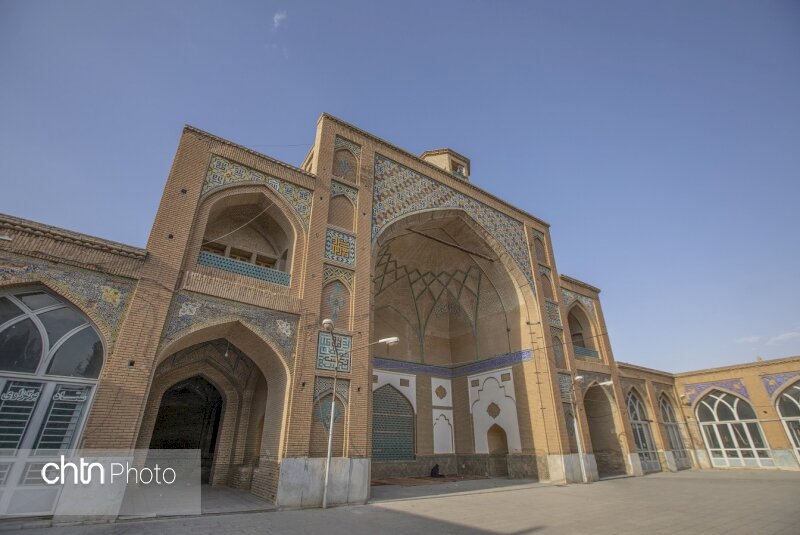Safavid mosque undergoes restoration in western Iran

TEHRAN – The Safavid era (1501-1736) Soltani Mosque in Borujerd, western Lorestan province, has undergone some rehabilitation works, the provincial tourism chief has announced.
The project involves repairing parts of the rooftop and exterior walls, Seyyed Amin Qasemi said on Saturday.
Every year, a different part of the building that needs urgent repair will be restored according to the allocated funding, the official added.
Also known as Imam Mosque, the mosque was built atop the ruins of an older mosque, which had been probably built in the 10th century BC.
During the Qajar era (1789-1925), it was renovated to become one of the largest mosques in the country.
There are three main entrances to the mosque, which has a four-arced plan. Borujerd’s Great Bazaar is accessible through the western entrance. It has a yard measuring 2,800 square meters, and the roof arch for the southern prayer is approximately 17 meters high.
Tile work, stucco carvings, and moqarnas chiseling decorate the interior of the mosque. There are also very fine patterns carved into the stones of the northern portico’s main base.
During the Borujerd earthquake of 2006, the structure was severely damaged.
It has been registered on the national heritage list.
Lorestan, which is a region of raw beauty, was inhabited by Iranian Indo-European peoples, including the Medes, c. 1000 BC. Cimmerians and Scythians intermittently ruled the region from about 700 to 625 BC. The Luristan Bronzes noted for their eclectic array of Assyrian, Babylonian, and Iranian artistic motifs, date from this turbulent period.
Lorestan was incorporated into the growing Achaemenid Empire in about 540 BC and successively was part of the Seleucid, Parthian, and Sassanid dynasties.
ABU/AFM
Leave a Comment